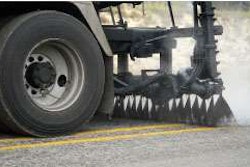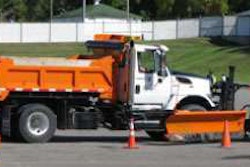All Fall Down

In a recent California case involving the intersection of construction law, personal injury law and OSHA regulations — Tverberg v. Fillner Construction, Inc. (Jan. 26, 2012) — the court ruled a general contractor could delegate its obligation to comply with government safety regulations to a subcontractor’s independent contractor. However, the court also found the general contractor could potentially be held liable for its negligent exercise of affirmative retained control over safety conditions relating to the independent contractor’s work.
The facts of Tverberg are as follows. In 2006, Fillner was the general contractor on a project to expand a commercial fuel facility in Dixon, California. The project required construction of a metal canopy over some fuel pumping units. Fillner contracted with subcontractor Lane Supply, which delegated the work to subcontractor Perry Construction Company (Perry). Perry hired Tverberg — an independent contractor — as foreperson of Perry’s two-person crew to construct the canopy. Tverberg had more than 20 years’ experience in structural steel construction and held a state contractor’s license under the name of J.T. Construction, a sole proprietorship consisting exclusively of Tverberg. Fillner also hired subcontractor Alexander Concrete Company to erect eight “bollards” — concrete posts intended to prevent vehicles from colliding with the fuel dispensers.
On May 1, 2006, Tverberg’s first day on the job, Alexander Concrete had already dug eight holes for the bollard footings. Each hole was four feet wide and four feet deep. The holes, which were marked with stakes and safety ribbon, were next to the area where Tverberg was to erect the metal canopy. The bollards had no connection to the building of the metal canopy. In fact, Tverberg had never seen bollard holes at a canopy installation site. Tverberg asked Steve Richardson, Fillner’s lead man, to cover the holes with large metal plates that were on site. However, Richardson said he did not have the necessary equipment to install the plates that day. Richardson did have his crew use a tractor to flatten dirt that was piled around the holes. Tverberg removed three or four stakes that marked the edges of some of the bollard holes. The next day, with the bollard holes still uncovered, Tverberg began work on the metal canopy. He again asked Richardson to cover the holes, but Richardson did not cover them. A short while later, as Tverberg walked from his truck toward the canopy, he mis-stepped and fell into a bollard hole and was injured.
In July 2006, Tverberg filed a personal injury action against Fillner and Perry. Tverberg alleged causes of action for negligence and premises liability, and sought recovery for alleged physical and mental injuries and lost income.
The court evaluated two potential bases for liability of the general contractor, Fillner. First, the court examined the potential liability of Fillner under a theory of breach of a non-delegable duty. Tverberg argued Fillner was responsible for complying with Cal-OSHA safety requirements that all pits be barricaded or securely covered. However, in California, when a hirer delegates contracted work to an independent contractor, it also impliedly delegates its duty to provide a safe workplace to that contractor. In these circumstances, the hirer has no duty and the independent contractor may not recover from the hirer for his or her injuries. Here, Fillner delegated its obligation to comply with Cal–OSHA workplace regulations to Tverberg, and therefore, could not be held liable for Tverberg’s injuries.
General contractors need to act with deliberate caution to avoid a “mis-step” and assuming liability that might otherwise not be their responsibility.
Second, if a hirer entrusts work to an independent contractor, but retains control over safety conditions and then negligently exercises that control in a manner that affirmatively contributes to an employee’s injuries, the hirer is liable for those injuries based on its negligent exercise of that retained control. Because the hirer actively retains control, it has not properly delegated that authority to the independent contractor. However, a hirer is not liable to an independent contractor or their employee merely because it retains control over safety conditions. Liability depends on whether the hirer exercised that retained control in a manner that affirmatively contributed to the injuries.
Here, the court found that by ordering the holes to be created and requiring Tverberg to conduct unrelated work near them, Fillner’s conduct may have constituted a negligent exercise of its retained control that could have affirmatively contributed to Tverberg’s injuries. In addition, Fillner determined there was no need to cover or barricade the bollard holes. Fillner’s employee in charge of the jobsite testified he concluded the stakes and safety ribbon provided sufficient worker protection. As a result, the court found that Fillner might have affirmatively assumed the responsibility for the safety of the workers near the bollard holes, and discharged that responsibility in a negligent manner, resulting in Tverberg’s injuries. Finally, Fillner failed to cover the holes after Tverberg twice asked Fillner to do so. When Tverberg made his first request to cover the holes, Fillner’s representative stated the equipment required to cover the holes was not available. The court determined that a jury could conclude that Fillner agreed to cover the holes and then failed to meet this responsibility. Since the court concluded Fillner might be liable to Tverberg on a theory of affirmative retained control, the case was allowed to proceed toward trial against Fillner.
Although rules vary by jurisdiction, for general contractors and independent contractors, this case shows the importance of who retains and exercises affirmative control over compliance with job site safety requirements. In Tverberg, despite the fact the general contractor properly delegated its obligation to comply with Cal–OSHA regulations to an independent contractor; it was still potentially liable for the independent contractor’s injuries based on its affirmative retained control over safety conditions. Given the complexity of the modern construction site — including the myriad of OSHA safety regulations and the multitude of subcontractors, suppliers and independent contractors involved in the construction process — general contractors need to act with deliberate caution to avoid a “mis-step” and assuming liability that might otherwise not be their responsibility.
Brian Morrow is a partner in Newmeyer & Dillion LLP, a law firm in California. He is a licensed California Civil Engineer, and specializes in the field of construction law, including road and heavy construction. Contact him at [email protected]












